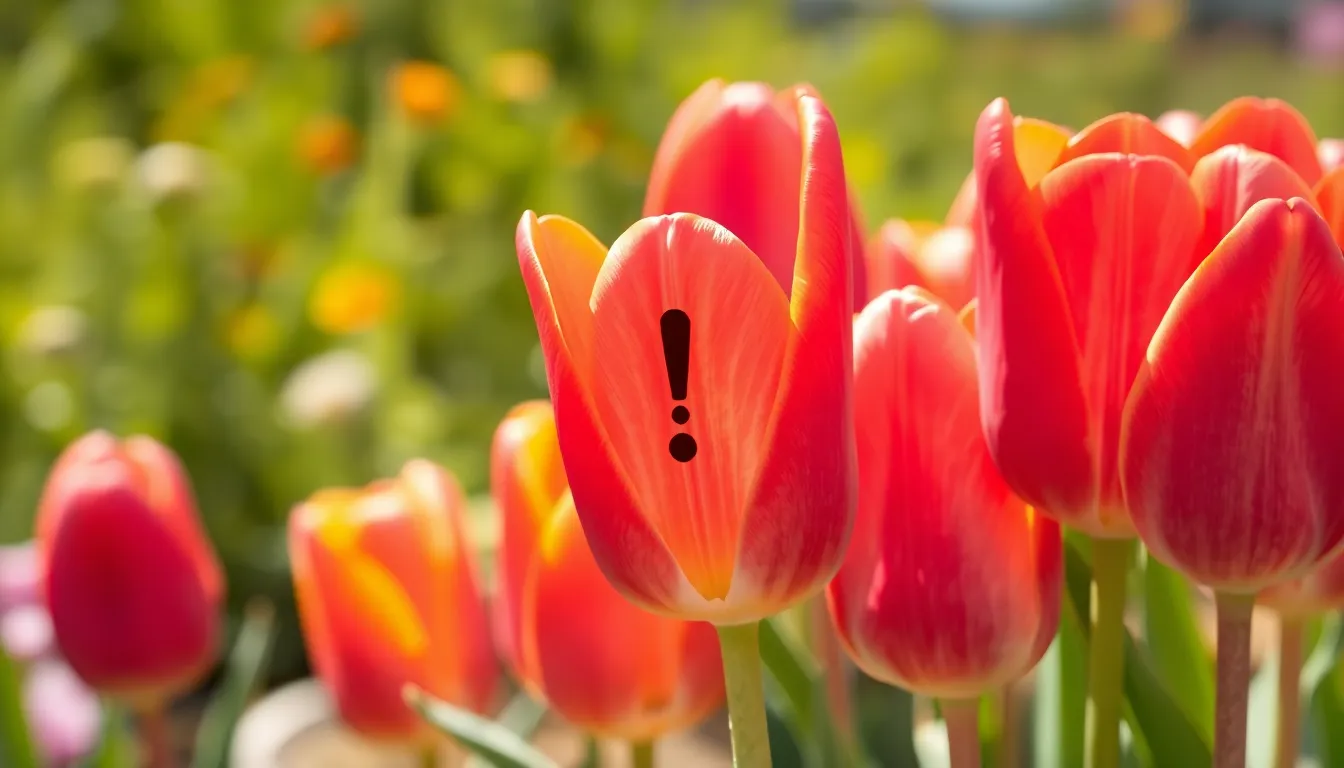Tulips are a springtime favorite, bursting with vibrant colors and a charm that can make any garden pop. But before you go all out with your floral arrangements, there’s a question lurking in the petals: are tulips safe for our feline friends? While cats might not have a green thumb, they sure have a knack for getting into trouble, especially when it comes to nibbling on plants.
Picture this: your cat, blissfully unaware, munching on a tulip like it’s the latest gourmet treat. Unfortunately, tulips aren’t just pretty faces; they can cause some serious health issues for our whiskered companions. In this article, we’ll dive into the world of tulips and cats, exploring the potential risks and what you can do to keep your furry friend safe while still enjoying the beauty of these delightful blooms.
Table of Contents
ToggleUnderstanding Tulips
Tulips are cherished for their striking beauty and vibrant colors. Many aspects of tulips warrant attention, especially concerning their safety for cats.
Characteristics of Tulips
Tulips belong to the Liliaceae family and thrive in temperate climates. Their smooth, elongated leaves often grow in a basal rosette. These perennial herbs generally produce cup-shaped flowers, displaying a variety of colors. Height ranges from 4 to 24 inches, depending on the species. Blooming typically occurs in early spring, delighting gardeners and flower enthusiasts alike. Besides their visual appeal, tulips can emit a mild fragrance, which attracts pollinators.
Common Varieties
Numerous varieties of tulips exist, each with unique characteristics. Darwin Hybrid tulips exhibit longevity and vibrant colors, making them popular choices. Triumph tulips showcase sturdy stems and early bloom times. Parrot tulips, renowned for their fringed edges, add a dramatic flair to gardens. Single Late tulips bloom in late spring, often thriving in various conditions. Additionally, fringed tulips bear delicate, serrated petals, captivating those who admire floral detail. Each variety contributes to the allure of tulips while posing potential risks to feline companions.
Toxicity of Tulips to Cats

Tulips pose significant risks to cats due to their toxic properties. Various parts of the tulip plant, especially the bulb, contain compounds that are harmful to felines.
Symptoms of Tulip Poisoning
Symptoms of tulip poisoning in cats often appear within hours of ingestion. Common signs include vomiting, diarrhea, and excessive drooling. Cats may also exhibit lethargy, loss of appetite, or abdominal pain. If ingestion occurs, seeking veterinary assistance promptly is crucial to address these symptoms effectively.
Severity of Toxicity
The severity of tulip toxicity varies based on the amount ingested. Mild toxicity can lead to gastrointestinal upset, while severe cases may result in more serious health issues. The bulb contains the highest concentration of toxic compounds, increasing the risk if a cat digests it. Veterinary intervention is essential for cats showing severe symptoms, as tulip poisoning can lead to complications without treatment.
Recommendations for Cat Owners
Cat owners must take precautions when keeping tulips in their homes or gardens. Ensuring feline safety requires proactive measures to prevent access to these plants.
Preventing Cat Access to Tulips
Establishing barriers around tulips helps keep cats at a safe distance. Using fences or planting tulips in elevated areas limits their access. Additionally, placing tulips in areas that are off-limits to cats is effective. Monitoring gardens or floral displays frequently allows for the detection of any feline interest. Engaging with deterrent sprays may further discourage cats from approaching.
Alternatives to Tulips
Choosing safer flowers can enhance gardens without risking cat health. Consider pet-friendly plants such as marigolds, catnip, or snapdragons. These plants provide vibrant colors while being non-toxic. Researching other options like orchids or daisies offers additional variety. Selecting flowers that align with a garden’s aesthetic without endangering pets creates a happy, harmonious environment.
Tulips are undeniably beautiful but they pose significant risks to cats. Their toxicity can lead to serious health issues if a curious feline decides to nibble on them. Cat owners need to be vigilant and take necessary precautions to protect their pets while still enjoying the vibrant colors that tulips bring. By implementing barriers and considering safer flower alternatives, it’s possible to create a stunning garden that prioritizes feline safety. Awareness and proactive measures can ensure a harmonious coexistence between beloved pets and the beauty of tulips.






